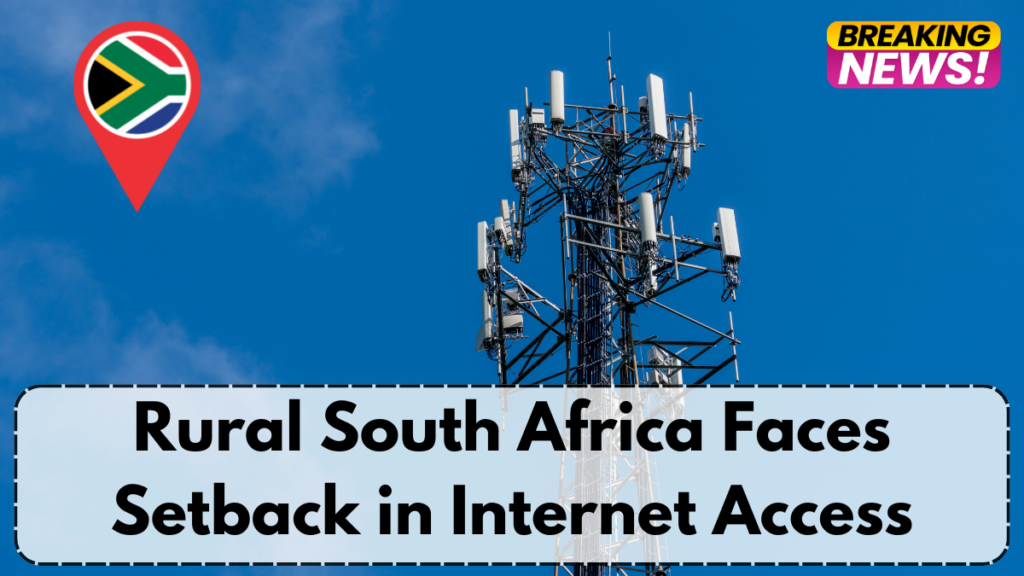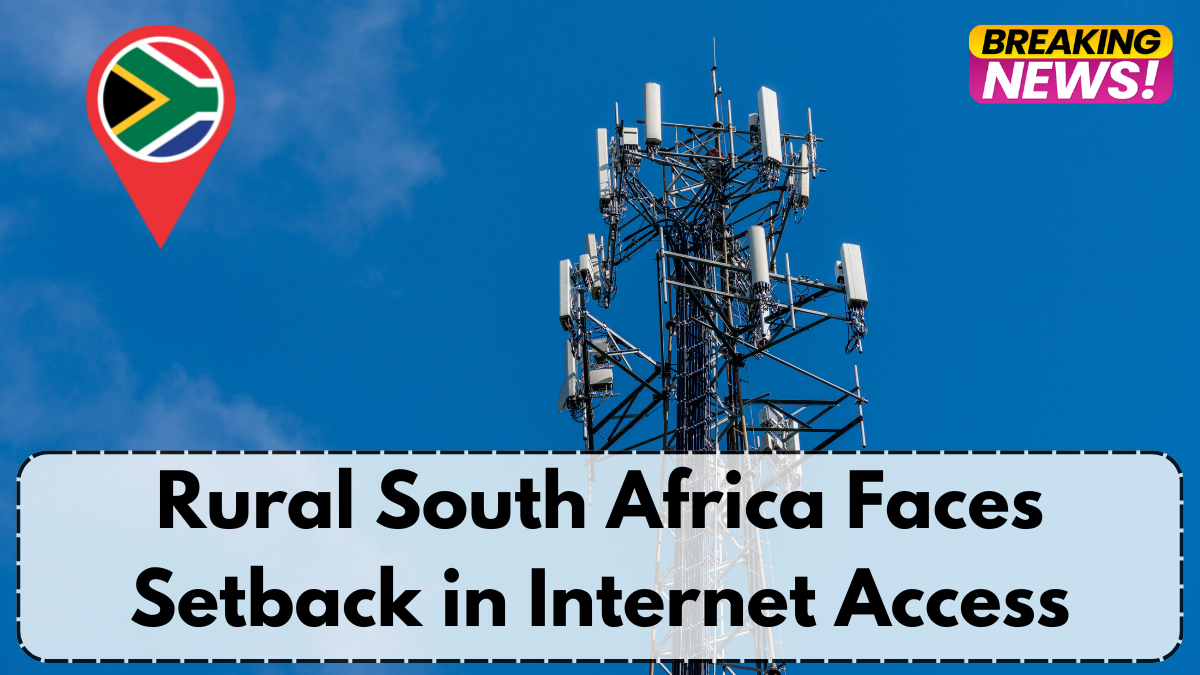Low Earth Orbit (LEO) satellite networks are poised to disrupt South Africa’s rural internet landscape. While these networks threaten to displace traditional Wireless Internet Service Providers (WISPs), they also represent a significant opportunity for collaboration and improved service delivery. The coming years will likely determine whether rural ISPs evolve or risk becoming obsolete.

The Current State of Rural Internet in South Africa
Rural internet access in South Africa is largely dependent on WISPs, which offer Wi-Fi-based fixed wireless access (FWA). These providers use high-mounted antennas to transmit signals to customer premises via the unlicensed Wi-Fi spectrum. This approach has served rural homes, farms, game lodges, and businesses for years, but its limitations are becoming more pronounced.
Challenges of Fixed Wireless Access (FWA)
Compared to fibre-to-the-home (FTTH), fixed 5G, or fixed LTE, FWA lags in speed, latency, and overall value. Pricing further complicates the equation. For example, a provider like Herotel offers a 4/2 Mbps connection for R499 per month, while urban customers can access FTTH packages offering speeds from 200 Mbps to 500 Mbps for the same or less. At the higher end, Herotel’s 10/3 Mbps line at R999 is vastly outclassed by more advanced technologies at similar price points.
GEO Satellite Internet: The Legacy Alternative
In extremely remote locations, geosynchronous (GEO) satellite internet is sometimes the only option. However, these services are plagued by high latency, restrictive fair usage policies, expensive installation, and long-term contract requirements. These drawbacks make them less attractive despite broader coverage.
LEO Satellite Technology: A Game-Changer
LEO satellites orbit closer to Earth, reducing latency and increasing speeds. SpaceX’s Starlink is currently the most recognizable name in this space, boasting over 7,000 satellites and serving more than 5.3 million users globally as of April 2025. The service provides broadband-like performance in remote areas, making it an appealing alternative to both WISPs and GEO satellite services.
Starlink in South Africa: Widespread Use Despite Legal Hurdles
Although Starlink is not yet officially licensed in South Africa, many users access it through its roaming feature. Early adopters report improved speeds and reliability over their former WISP or LTE providers. Starlink’s direct-to-consumer model bypasses intermediaries, keeping prices competitive and user experience consistent.
Q-Kon Africa Group CEO Dawie de Wet estimates that Starlink’s existing satellite fleet could support over half a million South Africans with 200GB/month at 10Mbps. He predicts a notable impact on WISP revenues if Starlink launches officially.
Strategic Partnerships: Still Out of Reach for Small ISPs
Despite its potential, Starlink does not allow third-party resellers. This leaves WISPs with few options to integrate LEO technology into their offerings. Meanwhile, the only currently approved LEO provider in South Africa — Eutelsat OneWeb — targets enterprise clients with high-end, costly solutions.
Emerging Competitors: Project Kuiper and SpaceSail
Amazon’s Project Kuiper aims to enter the South African market soon, with the first batch of satellites scheduled to go live on April 9, 2025. Amazon’s strong local presence and flexible partnership model suggest that it may collaborate with resellers in the future. However, its current agreements are with major telecom firms like Vodacom and Vodafone, possibly marginalising smaller ISPs.
China’s SpaceSail, also known as Qiafan, is another contender. With 100 satellites already in orbit, SpaceSail is expanding rapidly and has agreements in Brazil and Kazakhstan. Discussions are ongoing in over 30 countries, potentially including South Africa. Its ties with Huawei and past involvement in local telecom infrastructure could facilitate market entry.
Comparative Overview of Rural Internet Options in South Africa
| Technology | Typical Speed | Monthly Cost (Approx) | Latency | Availability | Key Challenges |
|---|---|---|---|---|---|
| FWA (WISP) | 4–10 Mbps | R499–R999 | High | Most rural areas | Speed, reliability |
| GEO Satellite | 5–20 Mbps | R700–R1500+ | Very High | Remote-only | Latency, contracts, FUPs |
| Starlink (LEO) | 50–100+ Mbps | R900–R1300 | Low | Via roaming (Unofficial) | Not legally approved yet |
| FTTH / Fixed 5G / LTE | 20–500+ Mbps | R499+ | Low | Urban and peri-urban | Limited rural infrastructure |
Looking Ahead: Opportunities for Collaboration
While small ISPs currently face roadblocks in partnering with major LEO operators, the future might open doors for collaboration. As the market matures, regulatory bodies may pave the way for local partnerships, offering smaller players a chance to remain competitive through hybrid models that combine FWA and LEO services.
Conclusion
The evolution of LEO satellite broadband is rapidly changing the landscape for rural internet in South Africa. While these technologies threaten traditional WISP models, they also present new pathways to improved connectivity. Providers that adapt, seek partnerships, or diversify their offerings may thrive. Those that resist the change risk falling behind in an increasingly connected world.
FAQs
What is a LEO satellite?
A LEO (Low Earth Orbit) satellite orbits at an altitude between 160 and 2,000 kilometers above Earth, enabling faster data transmission and lower latency compared to GEO satellites.
Is Starlink legal in South Africa?
As of April 2025, Starlink is not officially licensed in South Africa. However, many users access the service via its roaming feature, though this is technically against local regulations.
Can small ISPs partner with Starlink?
Currently, no. Starlink operates on a direct-to-consumer model and does not work with third-party resellers.
Will Project Kuiper be available in South Africa?
Amazon plans to launch Project Kuiper services in April 2025 and may enter the South African market, likely through established telecom partners.
Is LEO better than GEO satellite internet?
Yes. LEO satellites offer lower latency, faster speeds, and more stable connections than GEO satellites, making them more suitable for real-time applications like video calls and online gaming.
For More Information Click Here
Pari is a passionate writer known for captivating stories that blend imagination and reality. Inspired by travel, history, and everyday moments, Pari crafts narratives that resonate deeply with readers.



